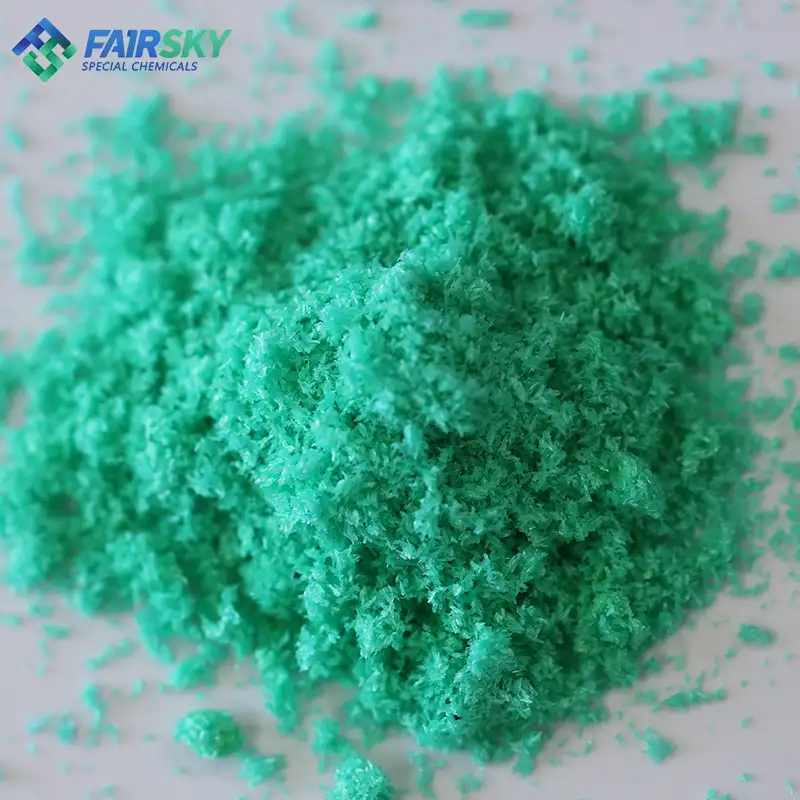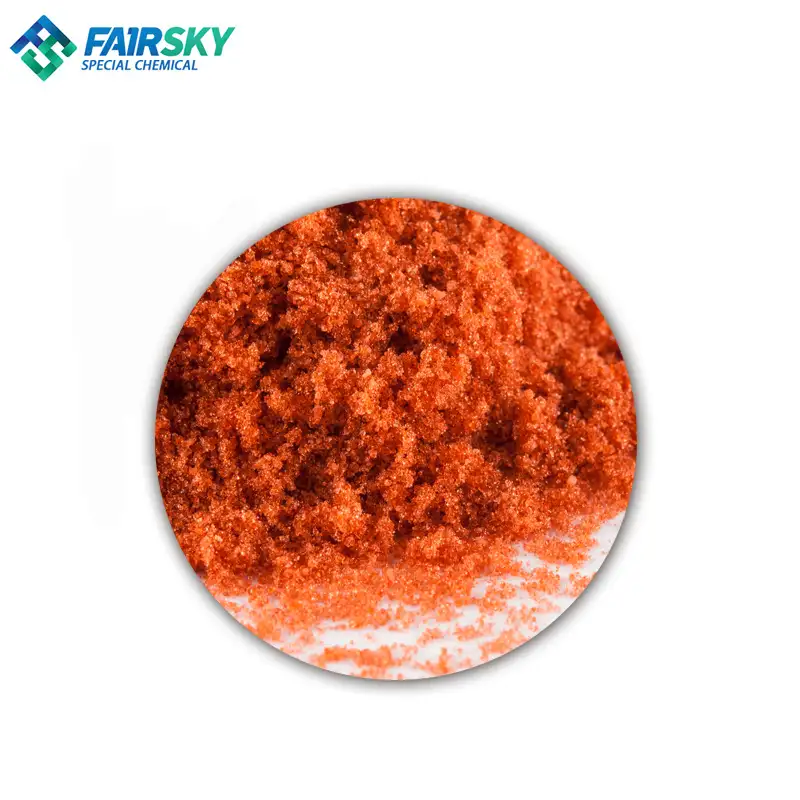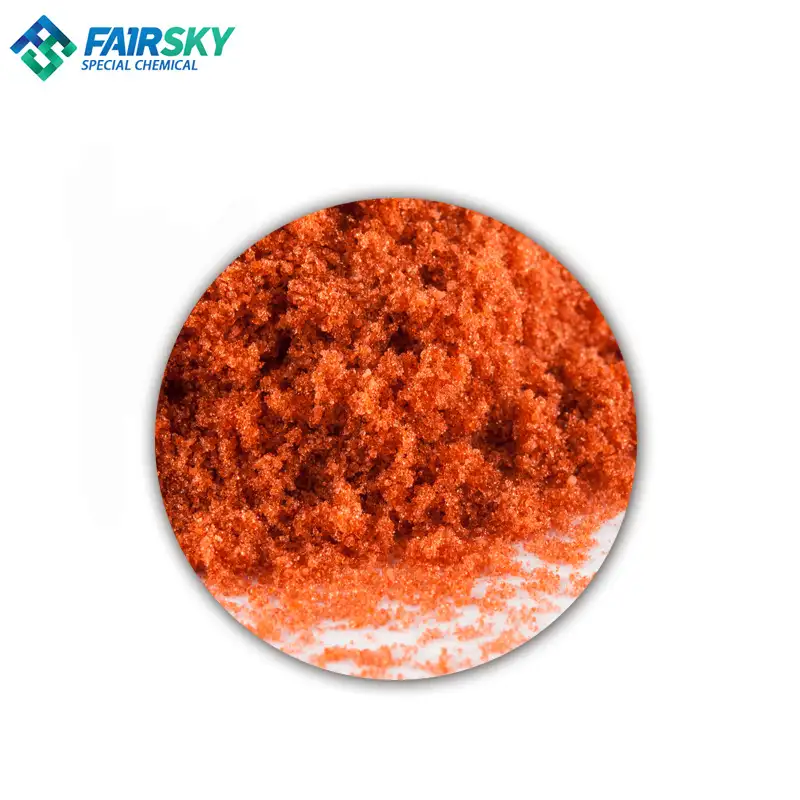Properties and applications of cobalt chloride
Cobalt(II) chloride is an inorganic compound of cobalt and chlorine, with the formula CoCl2. It is a sky blue crystalline solid.The compound forms several hydrates CoCl2•nH2O, for n = 1, 2, 6, and 9.
Claims of the formation of tri- and tetrahydrates have not been confirmed.[4] The dihydrate is purple and hexahydrate is pink. It is usually supplied as the hexahydrate CoCl2·6H2O, which is one of the most commonly used cobalt compounds in the lab.

Because of the ease of the hydration/dehydration reaction, and the resulting color change, cobalt chloride is used as an indicator for water in desiccants.Niche uses of cobalt chloride include its role in organic synthesis and electroplating objects with cobalt metal.Cobalt chloride has been classified as a substance of very high concern by the European Chemicals Agency as it is a suspected carcinogen.
Cobalt chloride hexahydrate is a chemical substance with the molecular formula CoCl2-6H2O, red monoclinic crystalline system. Melting point 86℃, relative density 1.924, solubility Easily soluble in water, soluble in ethanol, acetone and aether.
It can be used as paint desiccant, ammonia absorber, neutral dye, drying indicator, ceramic colorant, feed additive, etc.Safety Information of Cobalt Chloride HexahydrateInhalation of cobalt chloride dust may cause bronchial asthma, and for sensitive individuals, inhalation of cobalt chloride dust may cause obstructive lung lesions and shortness of breath. The dust is irritating to the eyes, and long-term exposure can cause eye damage.
If 500mg of cobalt chloride enters the body in a day, it will cause loss of appetite, vomiting, diarrhea, and redness of face and limbs. When grinding cobalt chloride, it can cause acute dermatitis, with a large number of scattered red papules and small nodules, edema; sometimes ulcers are formed on the surface. Large amounts can cause acute poisoning, causing blood, thyroid and pancreatic damage.
Preparation of Cobalt Chloride HexahydrateCobalt chloride can be prepared in aqueous solution from cobalt(II) hydroxide or cobalt(II) carbonate and hydrochloric acid.The solid dihydrate and hexahydrate can be obtained by evaporation. Cooling saturated aqueous solutions yields the dihydrate between 120.
2 °C and 51.25 °C, and the hexahydrate below 51.25 °C.
Water ice, rather than cobalt chloride, will crystallize from solutions with concentration below 29%. The monohydrate and the anhydrous forms can be obtained by cooling solutions only under high pressure, above 206 °C and 335 °C, respectively.The anhydrous compound can be prepared by heating the hydrates.
On rapid heating or in a closed container, each of the 6-, 2-, and 1- hydrates partially melts into a mixture of the next lower hydrate and a saturated solution -- at 51.25 °C, 206 °C, and 335 °C, respectively. On slow heating in an open container, water evaporates out of each of the solid 6-, 2-, and 1- hydrates, leaving the next lower hydrate -- at about 40 °C, 89 °C, and 126 °C, respectively.
Dehydration can also be effected with trimethylsilyl chloride. The anhydrous compound can be purified by sublimation in vacuum.Application of Cobalt Chloride HexahydrateThe red hexahydrate CoCl2-6H2O can be used as an indicator of water.
Anhydrous cobalt chloride test paper is blue when dry and turns pink when wet; infiltrating a certain amount of cobalt chloride in silica gel can be used to indicate the degree of moisture absorption of silica gel; when it changes from blue to red, it indicates that the water absorption has reached saturation. The red silica gel is dried at 120°C, and can still be used after it regains its blue color.









